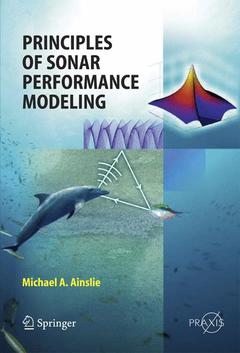Description
Principles of Sonar Performance Modelling, 2010
Geophysical Sciences Series
Author: Ainslie Michael
Language: English
Subjects for Principles of Sonar Performance Modelling:
Keywords
Modelling; Ocean; Oceanography; Sonar; Sound navigation; Underwater acoustics; acoustics; modeling; sound
Publication date: 08-2016
Support: Print on demand
Publication date: 08-2010
707 p. · 17x24.4 cm · Hardback
Description
/li>Contents
/li>Comment
/li>
Sonar performance modelling (SPM) is concerned with the prediction of quantitative measures of sonar performance, such as probability of detection. It is a multi-disciplinary subject, requiring knowledge and expertise in the disparate fields of underwater acoustics, acoustical oceanography, sonar signal processing and statistical detection theory. No books have been published on this subject, however, since the 3rd edition of Urick?s classic work 25 years ago and so Dr Ainslie?s book will fill a much-needed gap in the market. Currently, up-to-date information can only be found, in different forms and often with conflicting information, in various journals, conference and textbook publications.
Dr Michael Ainslie is eminently qualified to write this unique book. He has worked on sonar performance modeling problems since 1983. He has written many peer reviewed research articles and conference papers related to sonar performance modeling, making contributions in the fields of sound propagation and detection theory.
These books may interest you

Underwater Acoustic Data Processing 316.49 €



